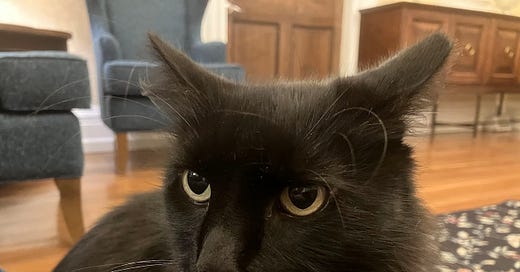The Specificity of Pope Leo XIV
What Pope Leo's story shows us about the reality of evangelization.
Except for one article I’d read at The Pillar, I didn’t know anything about Cardinal Prevost prior to his election as Pope Leo XIV, and I don’t think I was alone in that.
—> That’s great because this is not a forum for papal critiquing, though I am going to go ahead and say that I am totally stoked that it turns out, as hoped, that Leo XIV is indeed a Rerum Novarum guy. I love that so much. So so much. But back on topic . . .
So we have this American Pope that most American Catholics barely know, except that it turns out an awful lot of regular people know this guy! I’m enjoying the many wholesome stories of how normal and relatable Pope Leo’s “origin story” is — little brother, parish seminarian, baseball fan.
Indeed, given that the bulk of his ministry has been overseas, all the US-based stories about Pope Leo encounters are from regular life among average Catholics. He could be anyone you know. It’s startling.
Of course all the previous popes were also just people before they were pope, but that’s more something we tell ourselves than something we necessarily believe. Great men who rise up from the mists of other times and cultures, with backstories utterly unlike our own? They feel mythical. Legendary.
Ministering to Mythical Peoples
By design, bishops are often chosen from other dioceses, and pastors are rarely sent to administer the parish in which they grew up. Thus from the pewsitter’s vantage, our clergy sometimes feel a bit mythic themselves. They emerge on the scene as full-grown adults, in charge, backstory presented in carefully-chosen tidbits. This can be helpful for maintaining authority, but it also makes it easy for parishioners to forget this guy is also just this guy — a human being with a whole lifetime of loves and vulnerabilities.
Just as we can think “popes” or “priests” instead of this kid Robert Prevost you saw at the game the other week, whose brother is the principal at the school down the street, in the same way we tend to lump together the objects of parish ministry into categories of supposedly-similar people-types.
Thus we get “the elderly” (“silver seniors” if you prefer), “parents” “singles” “the homeless” “traditionalists” “homeschoolers” and so forth. It’s innocuous enough until you attend a catechetical conference and hear what religious education professionals have to say about “parents” and discover that an entire massive thrust of parish ministry is oriented not towards the actual children in need of formation at a specific parish in a specific year, but towards some generic “parents” and “kids” that are a compilation of the highlights from decades of worst-case scenarios.
Fact: You cannot minister to “the homeless.” You can only minister to the person in front of you, this person who is perhaps indeed without much of a home, but who has a story as complex and nuanced and unique as any other. A person.
You can’t minister to “the elderly,” you minister to specific individual people who happen to be living at this nursing home or attending that weekly gathering.
When you try to teach generic “children,” you’re just flinging facts and experiences across the room. Teaching requires knowing your students, knowing their individual questions and needs, and choosing ways to hand on knowledge that will make sense to them, personally.
This doesn’t mean generalizations can’t be helpful. We have to start somewhere. I see that you’re in the fifth grade / the nursing home / the homeless shelter / the rectory / the papal apartments, that gives me a little bit of information about what you might be experiencing, and the questions and concerns you might have.
But my goodness a Francis is not a John Paul II is not a Leo (of any kind), and likewise this fifth grader is not that one, this priest is not that one, this parent, this retiree, this person curled up under the portico . . . all different.
All in need of loving and being loved, knowing and being known.
Photo: This is the cat who lives (as of last autumn) at the Hampton Inn in Lexington, Virginia (historic area), which occupies the circa 1827 Col Alto historic mansion. There is no deeper meaning to this photo, but I’m sure we can fix that.




Editing note - 100% I spelled Prevost's name wrong the first time. (Now corrected). Left the remaining typos to keep everyone sharp.
When I heard him speak english in a 2012 interview, then heard his brother from Florida interviewed, I was low-key the person who was like, “he is from Nazareth… just one of us… nothing special.” Pretty anticlimactic when I’m used to hearing popes speak in ancient or foreign Romance languages. Where is the mystique? He grew up in a tiny brick four-square house and probably ate baloney sandwiches for lunch. And his brothers picked on him! It is so fun to work through these perceptions.